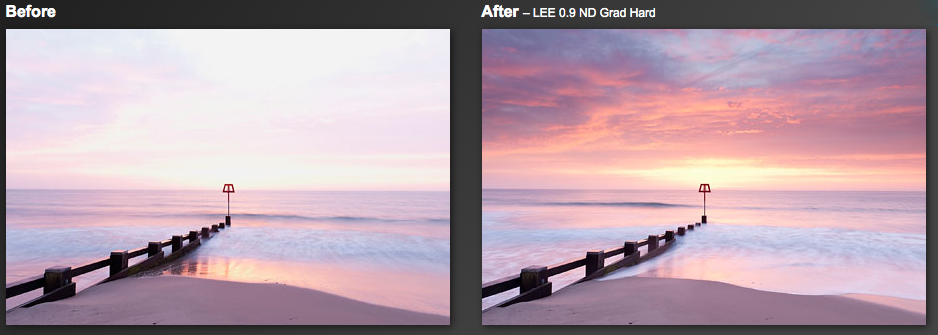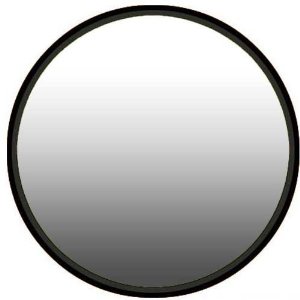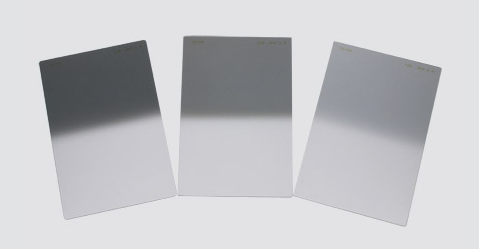Graduated Neutral Density (Grad ND) Filter-When & How to Use
If your interest is in photographing beautiful landscapes, you must consider picking up a Graduated Neutral Density filter. So, what is the use of the Grad ND filter? How does it really help to improve your pictures? Also, How to use one? I will share the answers to all these questions through this guide. If you are looking to buy a grad ND filter, you will find this guide very useful.
What is a Graduated Neutral Density Filter?
A Graduated Neutral Density filter, also called a Grad ND filter, is one that has got two halves. The first half of this filter is a neutral density one (dark section) and the other half will be a clear section.
The main purpose of such a filter is to overlay the bright part of the scene into the dynamic range of the sensor. A Grad ND filter helps to correctly expose the bright part of the scene, especially the sky. Thus, it helps to expose the whole image correctly. It is one of the favorite filters of landscape photographers.
Some of the popular manufacturers of Graduated ND filters are Lee, K&F, and Tiffen.
Different Types of Grad ND Filters
A Graduated Neutral Density filter comes in two types.
1. Soft Edge Filter
In the case of a soft edge Graduated ND filter, the transition from the brighter side to the darker side is smooth
You can use this camera filter if you have scene where the transition from the bright to dark section of the image happens smoothly.
2. Hard Edge Filter
In the case of a hard edge filter, there is an abrupt change of brightness from the dark to the bright side of the filter.
This filter can help reduce the harsh light (additional brightness) from the extra brighter side. Thus, the final photograph will look more pleasing with proper exposure.
3. Drop-In Filter
You can get both hard-edge and soft-edge graduated ND filters as drop-in filters.
If you go for a drop-in filter, you need to invest in a filter holder kit. You can attach this holder in front of the camera lens.
After attaching, you just need to slide the filter which will come in the form of a rectangular sheet into the filter holder.
4. Screw-In Filter
Graduated Neutral Density filter is also available as a screw-in type filter. You can get both hard and soft edge filters in this type.
If you decide to go with the screw-in type filter, you must know that you can use the filter with the camera lens of the same thread size.
If you want to use the same filter on a camera lens with a different size, you will have to go for a step-up or step-down ring.
How to Use a Graduated Neutral Density Filter?
You can use the Grad ND filter with your DSLR, Mirrorlrrless, or Medium format cameras.
After attaching the filter, you need to position the dark side of the filter against the bright side of the scene. You need to adjust the position of the grad filter in such a way that the dark side of the filter fully covers the bright section of the scene.

Effect of using a grad ND Filter(Courtesy: LEE Filters)
The image on the left side is taken without the filter. The picture on the right is captured with a 0.9 Grad ND LEE filter.
On the left side image, the details in the sky got washed out since the camera exposed for the foreground elements.
On the right side image with the filter, you can see that the dark section of the filter has helped to reduce the amount of light coming from the brighter section of the scene.
You need to place the darker section of the filter against the brighter side. In the case of soft edge filters, there will not be a clear demarcation of these two sections, whereas in the case of hard edge ones; one can clearly see the separation. You can carry both Soft edge grads and Hard edge grads for landscape photography.
When to Use a Graduated Neutral Density Filter?

A Graduated Neutral Density Filter
If you have got a highly bright section separating the dark section with a perfect horizon line, you can use a Graduated Neutral Density Filter.
For example, when you capture a photo that contains a bright sky with land, separated by a straight horizon line, you can use this filter. You need to use the dark side against the bright sky. The grad filter will help in reducing the brightness of the sky. Thus, you can capture a properly exposed image.
If you don’t use the grad ND filter, you will end up blowing up the sky in the picture if you expose for the land. If you expose for the sky, you will end up in a dark land.
When Not to Use a Grad ND Filter?
You cannot use this filter for all the scenes.
I will share some situations where you must not use this filter.
You cannot use a grad ND filter if there is no clear line of separation between the light and dark part of the scene. For example, if the separation is in a curve shape.
Can I Use the Grad ND Filter with my Point & Shoot Camera?
You can use this filter with a point and shoot camera. In the case of a point and shoot camera, you will have to hold it in front of the camera.
For certain point and shoot camera models, you may get some additional accessories, which will help you in mounting these filters in front of the lens.


I just want to say I am just very new to blogging and seriously enjoyed your page. Likely I’m planning to bookmark your blog . You amazingly come with amazing articles. Thanks a bunch for sharing your webpage.